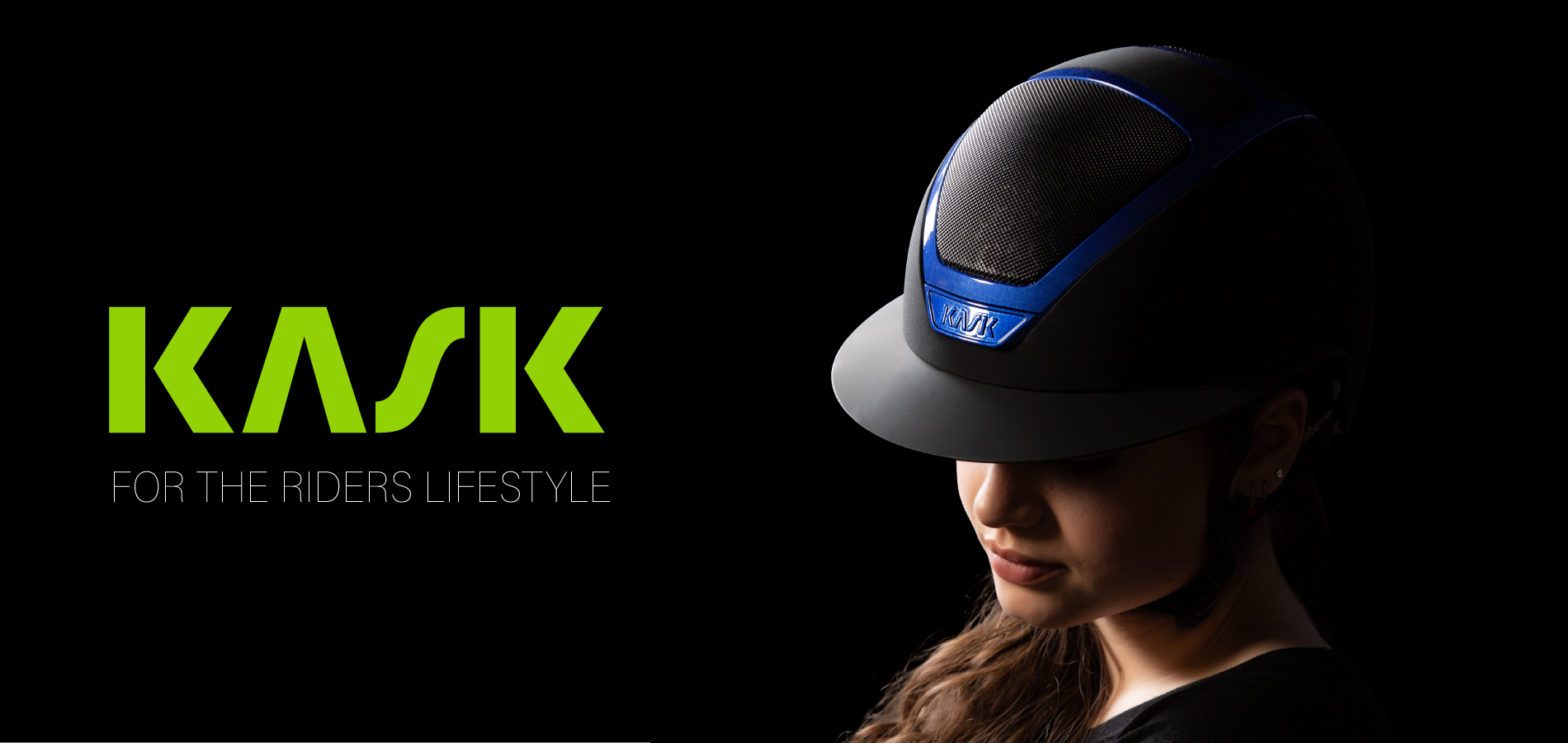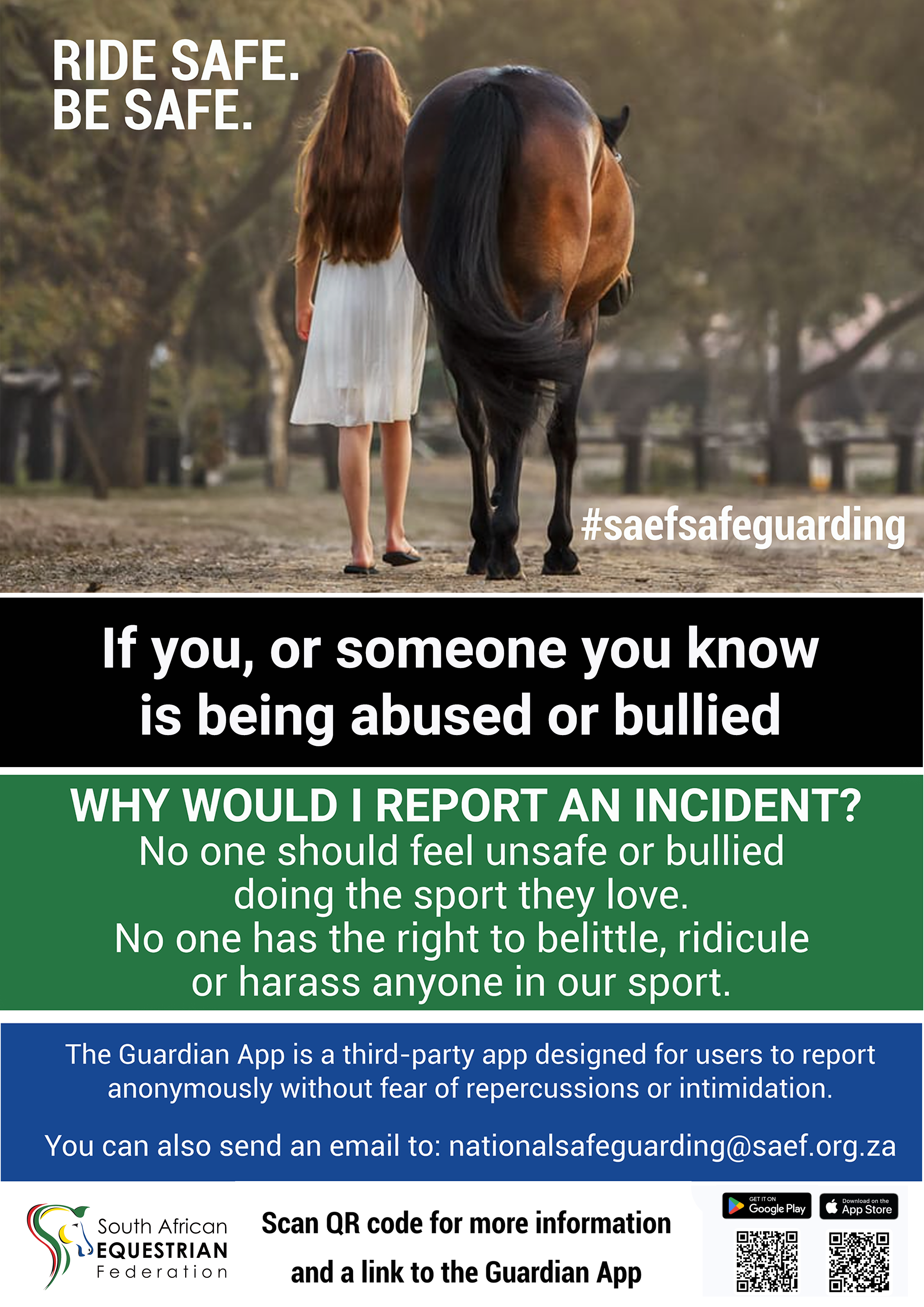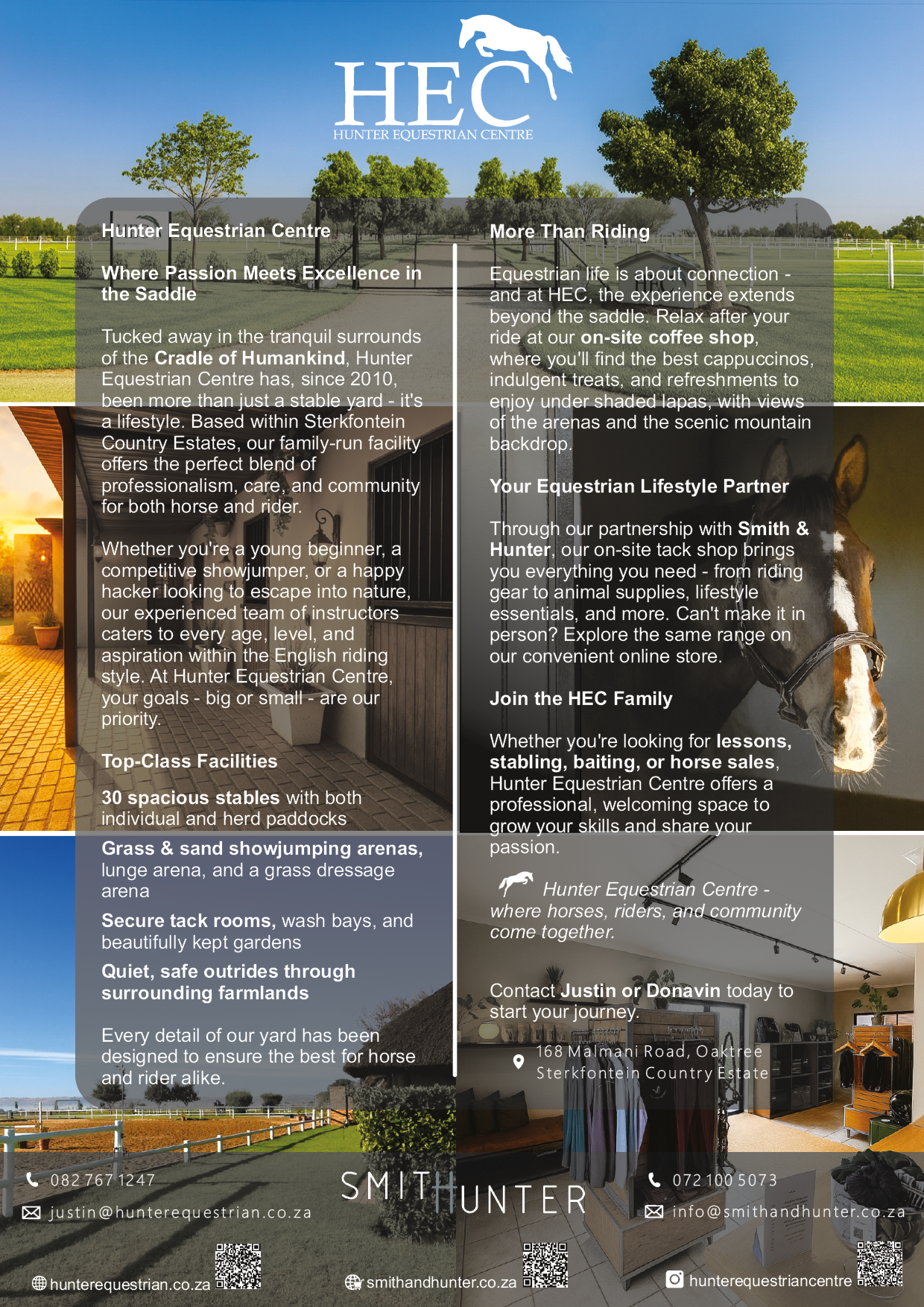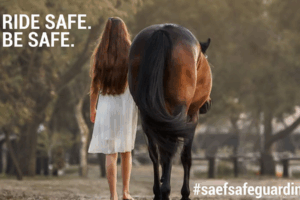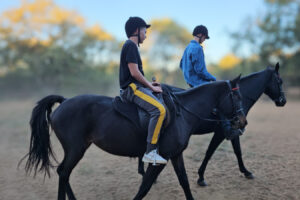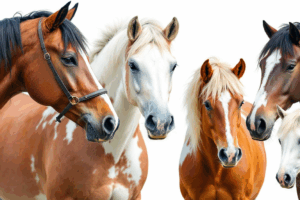A horse shaped by history, celebrated in the present, and trusted to carry families and riders into the future.
By Charlene Carroll
Let’s set the scene. It’s July 2025, and the Afridome in Parys is alive with energy. Families lean over the rails, children dart between arenas, and the warm scent of horse and dust mixes with the chatter of competitors. The event? The Annual SA Boerperd National Championships.
This is the largest showcase of the South African SA Boerperd in the country, featuring the coming together of generations of breeders, riders, and the crème de la crème of SA Boerperd breeding stock. But it’s more than a show; it is a pilgrimage, a gathering of thousands that are drawn to every year to read the woven pages of a tapestry, written over centuries, to celebrate the honouring of a horse that carries South Africa’s history and spirit – literally on its back.
There is a beauty and charm to the SA Boerperd that gets under your skin. And once it’s there, it is difficult to replace.
The SA Boerperd Nationals
The show runs for almost a full week, beginning early each morning and finishing under the evening lights. In-hand classes showcase foals, youngstock and mature mares, geldings, and stallions, while breeder classes put entire family lines in the spotlight. Under saddle, horses compete in English showing classes, traditional high-action three- and five-gaited divisions, and performance tests. The schedule includes children’s and junior rider classes, single-harness, and the Universal Ridden Championships, where the best of the best face off.
For many, Nationals is more than a competition. It is, in fact, a reunion of old friends where knowledge is shared across generations, and a stage where the SA Boerperd stands proudly among the finest horses in the world.
As Jan Joubert, vice-president of the SA Boerperd Society and owner of Rooigras Stud, explains: “At our national show, you can present one horse or ten horses in different environments. From in-hand and breeder classes to English showing, traditional high-action divisions, and even single-harness classes. It’s really an environment that showcases everything the SA Boerperd can do.”
A true South African horse
The SA Boerperd’s modern brilliance has deep roots. A story dating back to the 1600s, featuring the Cape Horse, a blended breed of imported horses that had to survive the tough conditions.
Over centuries, it became the transport of the colony, the mount of the Great Trek, and the horse that carried Boer soldiers into battle. After the Anglo-Boer War, its numbers dwindled, but dedicated breeders kept the type alive. In 1973 the Breeders Society was established, and in 1996, the SA Boerperd was officially recognised as a fully indigenous South African breed.
“I may be biased, but I believe the SA Boerperd is the best general-purpose breed in the world,” states Jan. “You can almost do anything with it, endurance, jumping, showing, dressage, and even mounted games. What makes it so special is the combination of exceptional temperament and sound conformation. And you can trust them with children, not something you can say about every breed.”
Jan likes to call the SA Boerperd “the Toyota bakkie of horses” — reliable, versatile, and made for South Africa. His own stud began more than 20 years ago with two mares. Today, it has around 150 horses, and he says it is the glue in his family. “Horses gave me a way to connect with my daughters, and even now that they’ve grown up, it’s the reason we spend so much time together.”
For every generation
After speaking to so many people in the community, it has become clear that the big draw card around the SA Boerperd is that this isn’t just a horse. They are family members, touching the lives of their riders, adapting to conditions, and indulging the whims of their owners. They are a passion.
The Meintjes family’s story is just that; it reflects how the SA Boerperd finds its way into people’s lives almost by surprise, then never leaves. Carel Meintjes grew up riding American Saddlebreds but found his true home with the South African SA Boerperd. A respected horseman and breeder, he is the founder of Kylin Stud and has been a driving force in showing the breed’s versatility.
Carel campaigned the stallion Carel-Hancke Roebyn to multiple national titles, competing successfully even in the open showing world against traditional show breeds. Today, while his daughters carry the family legacy forward in the ring, Carel remains a passionate advocate for the SA Boerperd’s temperament, hardiness, and place as a family horse for every generation.
“When my daughters started showing a love for horses, I wanted something different from the American Saddler,” says Carel. “We didn’t want horses that only lived with professional trainers. We wanted family horses we could love and keep at home.
“When we went to breed shows, what struck me about the SA Boerperd was temperament. I remember watching children as young as five or six ride big stallions safely, even climbing under their bellies, and I thought: This is the horse for us.”
From that moment, the SA Boerperd became central to the family’s life. Carel’s daughters, Linda and Kayla, grew up in the saddle and today are championship riders in the three-gaited classes.
What the breed means
Walking the rows of stables at Nationals, you see the mix that defines the SA Boerperd. Polished champions plaited for the ring alongside foals dozing in straw, each one a small part of a living legacy. A reminder that every ribbon in the arena begins with a breeder’s quiet work at home.
Linda reflects on what the breed has meant to them: “We grew up with the breed. My grandfather always said the SA Boerperd is the perfect horse for little girls to love, give carrots to, and grow up with. Over the years, we rode Welsh ponies, Nooitgedachters, Thoroughbreds, and Arabs, but we always came back to the SA Boerperd.
“We even started our own Kylin Stud just to keep our horses’ bloodline going. The horse my sister is competing on now is actually the first foal we ever bred,” Linda adds.
The combination of versatility and temperament kept them hooked. “With one horse, my daughters could jump, do equitation, dressage, and showing, and do it well,” Carel says. “That versatility is something I really love about them.”
For Linda, it goes beyond competition results. “When I think about the SA Boerperd, I love that it can compete across the board. It’s an ever-growing breed that continues to gain strength and popularity. They breed easily, thrive in the field without too much maintenance, can be a child’s pony, and still have the heart to perform at the highest level.”
Breeding with purpose
Behind every ring appearance is years of thoughtful breeding. Jan explains why quality has remained so consistent. “Every foal must be evaluated and approved before it can enter the studbook. We take great care to maintain the breed’s purity and continually improve its quality.
“For generations, farmers bred horses for survival and work; aspects such as temperament, sound legs, and stamina were non-negotiable. That’s the foundation we inherited as modern breeders.” Jan also mentions that it is this very durability and attention to detail that have ensured the quality of the SA Boerperd we know today.
“They really are easy horses,” says Carel. “You can keep them at home, ride them yourself, and bring in trainers when you need to. They’re hardy, don’t get sick easily, and have strong hooves. In fact, my daughter still competes in dressage on a horse without shoes. They live off grass, they don’t need much, and they’ll still give you everything in the ring.”
For Linda, the breeding journey is deeply personal. “Having been part of the SA Boerperd breed and competing since back in the day, it has been a privilege to grow up with the breed. Looking back at photos from the old Nationals at the Pretoria showgrounds, the standard has never stood still. Having top-quality trainers who raised the bar and gave us new levels to aim for has been vital in that growth.”
The quality of the breed
Today, the SA Boerperd Society counts around 123 registered breeders and studs across South Africa, Namibia, and Tanzania, supported by nearly double that number of show members who own and compete with SA Boerperds but do not operate their own studs. It’s a thriving community with new horses being approved each year, ensuring the breed’s future remains secure.
Approval, however, is no easy feat. According to Jan, horses are assessed in detail, from their eyes, ears, bone quality, neck set, back length, leg conformation, and overall type -all are scrutinised. Stallions undergo central testing, where they are judged against their peers by accredited panels. This rigorous system protects the integrity of the breed and raises the bar year after year, matching the stringency of the top registered competitive breeds in Europe.
But there may be a greater purpose and demand for these hardy little horses with a heart of a lion. According to Jan, “There’s growing interest from across Africa. Namibia, Mozambique, Angola, DRC and Tanzania. People want SA Boerperds because they thrive where other breeds struggle. If it weren’t for quarantine restrictions, we’d see them competing internationally in greater numbers.”
Competition meets community
Perhaps more than anything else, SA Boerperd people talk about the sense of belonging. Carel describes Nationals as “a week-long reunion,” where competition is fierce in the arena but camaraderie rules outside it. “My daughters grew up alongside the same group of riders, and many of them are still competing together as adults. It’s a wonderful community to be part of.”
Linda agrees: “Going to the SA Boerperd Nationals every year feels like seeing family you only catch up with at Christmas. There are always new faces, but some of the founding members and their families remain, passing on the knowledge and passion that helped establish the breed. Outside the ring we’ll braai together and catch up as friends, but inside the arena it’s fierce competition — yet always with respect.”
That combination of competition and community is part of why Clare-Marcus Malony’s judging remarks (see sidebar) land so powerfully. By calling the 2025 Universal Ridden Championship “world-class,” she put into words what breeders and riders have long believed: the SA Boerperd belongs on the world stage.
The heart of the SA Boerperd
The SA Boerperd’s story is South Africa’s story, a melting pot of cultures and bloodlines, shaped by history, and carried forward by families who believe in its future. It is a horse that works, plays, competes, and connects.
From the dust of the Great Trek to the bright lights of the Afridome, the SA Boerperd has always carried more than riders. It carries heritage, hope, and the heart of South African horsemanship, and its journey is far from over.
A judge’s eye on the 2025 Nationals
Clare-Marcus Malony has judged across the world, but her time at the Afridome in Parys for the 2025 South African SA Boerperd National Championships was extra special. “Being asked to judge the Universal classes at the SA Boerperd National Championships has always been a highlight in my judging career,” she says. “But judging at the Afridome in 2025 has to be one of the greatest events I have ever judged at.”
The standard impressed her deeply. “The quality in the over-six classes was truly exceptional, and in the under-six classes, there were several horses I would have loved to have brought home. For the breeders, the in-hand classes are their shop window, and I can only congratulate them on presenting such outstanding horses. The future of the Universal SA Boerperd is looking extremely exciting.”
One of her biggest highlights was the Star Foal class, judged by three judges. “The arena was filled with eighteen super fillies and colts, each glistening under the evening lights and beautifully shown. The overall winner was an outstanding bay colt that entered the ring with movement, elegance, and quality in every way.” The Star Foal class is indeed special, as it is part of a breeding programme where the parents of a foal are nominated two years before the class.
“What really stood out this year was the standard of production, turnout, and schooling of the young horses. It must be the best I have seen over the years. I particularly want to commend Christopher from Rooigras Stud, who rode with such finesse, a soft hand and seat, allowing his horses to carry themselves under the lightest of contact. He created a lasting impression on me.”
Her final verdict on the championship was emphatic. “The Universal Ridden Championship for over-six-year-old horses was, quite simply, world-class. The sheer quality of the horses, their condition, turnout, schooling and the standard of riding was breathtaking. My overall winner was an outstanding grey stallion, beautifully ridden by a lady rider. His individual test was faultless. I learned he had also won Supreme Breed Horse at the prestigious Horse of the Year Show in 2023.”
Malony ends with gratitude. “The hospitality, the welcome, the assistance of ring stewards, arena party, competitors, families and grooms all made it a show to remember. It was an honour and a privilege.”



